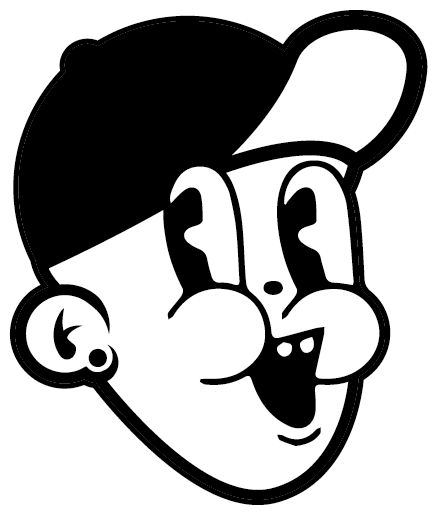Introduction
As a seasoned veteran in the design industry, having been intricately involved in hiring processes and reviewing countless portfolios over the years, I understand the challenges of standing out in a sea of talented designers.
In this guide, I’m excited to share insights and strategies on crafting the best product design portfolios that will elevate your candidacy and secure your dream role. From understanding your audience to showcasing your unique process and telling a compelling story, let’s delve into the essential elements that will set your portfolio apart in the competitive landscape of product design.
Whether you’re a seasoned professional or just starting out, these tips will help you create a portfolio that resonates with hiring managers and propels your career forward.
So what is a Product Design Portfolio anyway?
A Product Design portfolio is a curated collection of a designer’s work that showcases their skills, creativity, and expertise in the field of Product Design. It serves as a visual representation of the designer’s capabilities, highlighting their design process, problem-solving skills, and design aesthetics.
Typically, a Product Design portfolio includes a variety of projects, such as user interface designs, user experience designs, prototypes, and case studies. These projects are carefully selected to demonstrate the designer’s versatility, innovation, and ability to deliver effective solutions to design challenges.
Ultimately, a portfolio is used to showcase a designer’s talents to potential employers, clients, or collaborators, with the goal of securing new opportunities, projects, or employment in the field of Product Design.
Understanding What Employers Look For
Understanding what employers are looking for in a Product Design portfolio is crucial for aspiring designers aiming to stand out in a competitive job market. Employers seek portfolios that not only showcase strong technical skills but also demonstrate creativity, problem-solving abilities, and a deep understanding of user-centered design principles.
To stand out from the crowd, Product Designers should emphasise the diversity and depth of their portfolio, including a range of projects that highlight various aspects of their skillset and experience. It’s essential to ensure that each project in the portfolio tells a compelling story, detailing the design process, challenges faced, and solutions implemented.
Additionally, designers should pay attention to presentation, ensuring that their portfolio is visually appealing, easy to navigate, and reflects their personal brand. While creativity is encouraged, it’s crucial to strike a balance and avoid over-designing or including irrelevant information.
Ultimately, a Product Design portfolio serves as a designer’s first impression to potential employers, making it imperative to showcase professionalism, attention to detail, and a passion for the craft.
Choosing the Right Projects
When selecting projects to showcase in your Product Design portfolio, it’s essential to be strategic to create the best representation of your skills and abilities. Here are some do’s and don’ts to guide you:
Do’s:
- Align with Your Interests: Choose projects that align with your interests and passions within the field of Product Design. Selecting projects that genuinely excite you will not only result in better work but also demonstrate your enthusiasm to potential employers.
- Demonstrate Diversity: Include a variety of projects that showcase different aspects of your skillset, such as user interface design, user experience design, prototyping, and problem-solving. This diversity will demonstrate your versatility as a designer.
- Highlight Success Stories: Select projects that resulted in successful outcomes or had a significant impact. Whether it’s improving user engagement, increasing conversion rates, or solving a complex design challenge, highlighting success stories will showcase your ability to deliver results. However, I personally love to see case studies on projects that failed or didn’t meet expectations. Sharing your learnings are just as important as your successes. It’s unlikely that every project you work during your career will be a success.
- Show Process: Choose projects that allow you to showcase your design process from start to finish. Employers value seeing how you approach problems, iterate on designs, and ultimately arrive at solutions. Including sketches, wireframes, prototypes, and iterations will provide valuable insights into your thought process.
- Design is storytelling: Ensure you are telling a story with your case studies. You want your readers to be engaged and understand what they are looking at. Storytelling is a vital skill and it’s something I personally always look for when reviewing designer’s portfolios.
Don’ts:
- Quantity Over Quality: Avoid including too many projects in your portfolio at the expense of quality. It’s better to have a few well-executed projects that showcase your best work rather than overwhelming employers with mediocre projects.
- Irrelevant Projects: Avoid including projects that are irrelevant to the type of roles you’re applying for or projects that don’t showcase your design skills effectively. Be selective and prioritise projects that align with your career goals.
- Lack of Context: Don’t forget to provide context for each project in your portfolio. Clearly explain the problem you were trying to solve, your role in the project, any constraints you faced, and the ultimate outcome. Providing context will help employers understand the significance of each project and your contributions to it.
By following these do’s and don’ts, you can effectively choose the right projects to showcase in your Product Design portfolio and create a compelling representation of your skills and abilities.
What if I’m New to the Industry and Have Limited Work for My Portfolio?
Navigating the creation of a design portfolio when you’re new to the industry or lack previous work experience can be daunting, but it’s entirely feasible with the right approach. I’ve worked with many people who have decided to change career, some of these are the best designers I know today. So don’t let your lack of professional design examples block you from going after that dream design role.
Here’s a guide to help you build the best Product Design Portfolio:
Personal Projects and Passion Projects:
Start by working on personal projects or passion projects that interest you. Choose topics or problems that you’re genuinely enthusiastic about solving. These projects may not be commissioned by clients or employers, but they showcase your creativity, problem-solving skills, and dedication to the craft.
Consider redesigning existing products or apps to demonstrate your ability to improve user experiences or solve design challenges. Alternatively, identify areas where you see room for innovation and create your own product concepts from scratch.
Collaborate and Volunteer *:
Collaborate with friends, classmates, or local businesses on design projects. Offer your services for free or at a reduced rate in exchange for the opportunity to build your portfolio and gain real-world experience.
Look for volunteer opportunities or nonprofit organisations that could benefit from your design skills. Not only will you contribute to a good cause, but you’ll also gain valuable experience and projects to showcase in your portfolio.* Please note, no designer should work for free. You are providing a professional service and that deserves fair pay. However, volunteering to get experience at the beginning of your career can be beneficial but do not get taken advantage of.
Conceptual Projects and Case Studies:
Create conceptual projects and case studies based on hypothetical design briefs or challenges. Imagine scenarios or problems that a company might face and design solutions for them. Focus on demonstrating your design process, problem-solving abilities, and attention to detail.
Provide thorough documentation of your conceptual projects, including sketches, wireframes, user flows, prototypes, and design iterations. Explain your design decisions, rationale, and the potential impact of your solutions.
Engaging in conceptual projects and case studies not only enriches your portfolio but also hones skills essential for strategic roles later in your career. Whether launching your own venture, contributing to business decisions, or assuming leadership positions, the ability to conceptualise projects and conduct thorough case studies is invaluable. It lays the groundwork for problem-solving, innovation, and making informed, high-level design decisions, preparing you to thrive in diverse professional contexts and drive impactful outcomes.
Skill Development and Learning:
Use your portfolio-building journey as an opportunity to expand your skillset and learn new tools and techniques. Take online courses, participate in workshops, or join design communities to enhance your knowledge and stay updated on industry trends.
Experiment with different design tools, prototyping software, and methodologies to broaden your skillset and demonstrate adaptability in your portfolio.
Showcase Process and Progress:
Emphasise your design process and progress in your portfolio. Even if your projects are small or early-stage, document each step of the design journey—from research and ideation to prototyping and iteration.
Highlight any challenges you encountered along the way and how you addressed them. Employers value seeing your problem-solving skills and ability to overcome obstacles, regardless of the scale of the project.
By leveraging personal projects, collaborations, conceptual work, skill development, and a focus on process, you can create a compelling product design portfolio that showcases your potential and sets you apart as a promising designer, even with limited previous experience. Remember to continuously iterate on your portfolio as you gain new skills and experiences in your design career.
Crafting Your Narrative
Crafting your narrative is a pivotal aspect of building a captivating design portfolio. Beyond showcasing your projects, storytelling adds depth and resonance to your work, engaging potential employers or clients on a deeper level.
By weaving a narrative thread throughout your portfolio, you invite viewers into your design journey, providing context, insight, and emotional connection. Each project becomes more than just a collection of visuals; it becomes a story of challenges faced, creative solutions found, and lessons learned.
Through storytelling, you have the opportunity to highlight your unique perspective, design philosophy, and personal journey as a designer. A well-crafted narrative not only captures attention but also leaves a lasting impression, showcasing not just what you’ve done, but who you are as a designer.
Layout and Presentation Tips
When it comes to layout and presentation, attention to detail is key in creating the best Product Design portfolio. Begin by ensuring a clean and organised layout that guides the viewer seamlessly through your work. Consistency is paramount; maintain uniformity in font styles, colours, and spacing to create a polished look. After all you’re a Product Designer.
Utilise white space strategically to enhance readability and draw focus to your projects. Incorporate high-quality images and visuals to showcase your designs effectively, ensuring they are crisp and optimised for web viewing. Consider including interactive elements or animations to add dynamism and engage the viewer.
Lastly, don’t overlook the importance of mobile responsiveness; ensure your portfolio is accessible and looks impeccable across different devices. By prioritising layout and presentation, you elevate the overall impact of your portfolio, leaving a lasting impression on potential employers or clients.
Leveraging Testimonials and References
Leveraging testimonials and references can bolster the credibility and impact of your product design portfolio. Including testimonials from clients, colleagues, or managers adds a layer of social proof, validating your skills and expertise. Select testimonials that highlight specific strengths or achievements relevant to the projects showcased in your portfolio.
Additionally, offering references upon request demonstrates transparency and confidence in your abilities. Ensure that your references are professional and can speak knowledgeably about your work ethic, communication skills, and contributions to past projects.
When presenting testimonials or references in your portfolio, consider incorporating them strategically throughout, either as standalone sections or integrated into project case studies. This approach not only reinforces the quality of your work but also provides valuable insights into your professional relationships and reputation within the industry. Ultimately, leveraging testimonials and references can help differentiate your portfolio and instill trust and confidence in potential employers or clients.
Keep it updated and relevant
Keeping your portfolio updated and relevant is crucial, even amidst a busy schedule. While it can be challenging, especially when balancing a full-time job, it’s essential for staying prepared for future career opportunities. By regularly updating your portfolio, you keep recent projects fresh in your mind and avoid the last-minute scramble when seeking a new role.
Moreover, maintaining an updated portfolio ensures that your skills and accomplishments are accurately represented, allowing potential employers to see the breadth of your experience. If privacy concerns arise regarding your current employer noticing updates, consider password protection or refraining from publishing new case studies. Ultimately, prioritising the upkeep of your portfolio is an investment in your professional development and readiness for the next step in your career journey.
Conclusion
Crafting the best Product Design portfolio is not just about showcasing your work—it’s about telling your story, demonstrating your skills, and positioning yourself for success in the competitive design industry. By understanding what employers are looking for, choosing the right projects, leveraging testimonials and references, and keeping your portfolio updated and relevant, you can create a powerful tool that opens doors to new opportunities.
Remember, your portfolio is a reflection of your passion, creativity, and professionalism, so invest the time and effort it deserves. With a well-crafted portfolio in hand, you’ll be ready to impress potential employers, stand out from the crowd, and land your dream role in Product Design.



